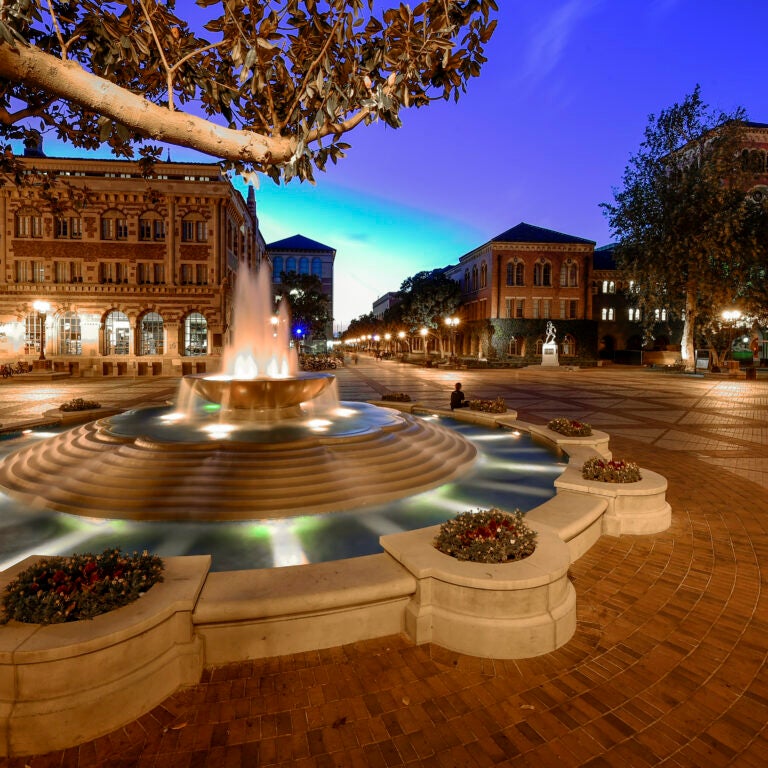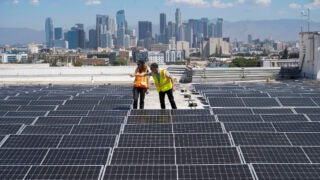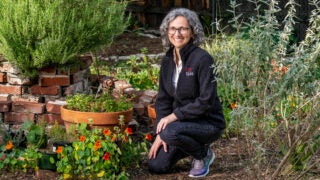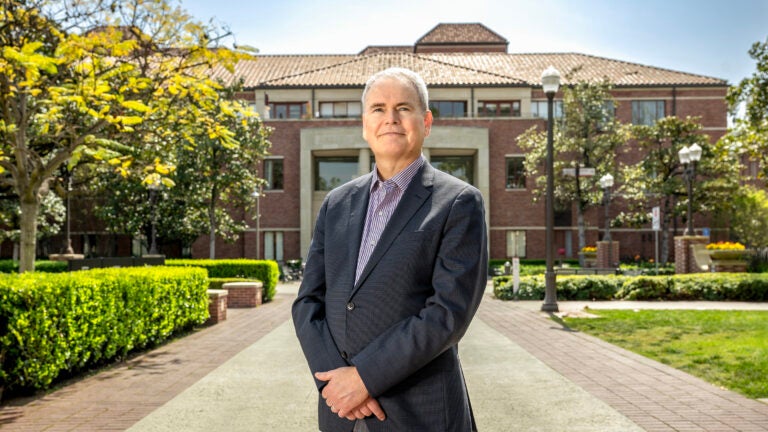
USC Price School of Public Policy Dean Chris Boone is an expert in urban sustainability and environmental justice. (USC Photo/Gus Ruelas)
A systems approach to saving the planet: Q&A with USC Price Dean Chris Boone
EARTH MONTH: Boone discusses how his approach to sustainability — rooted in understanding interconnected systems — guides his work in addressing the complex environmental and social challenges facing our planet.
All April, Trojan Family Magazine will feature Trojans who have made a significant difference in sustainability at the University of Southern California.
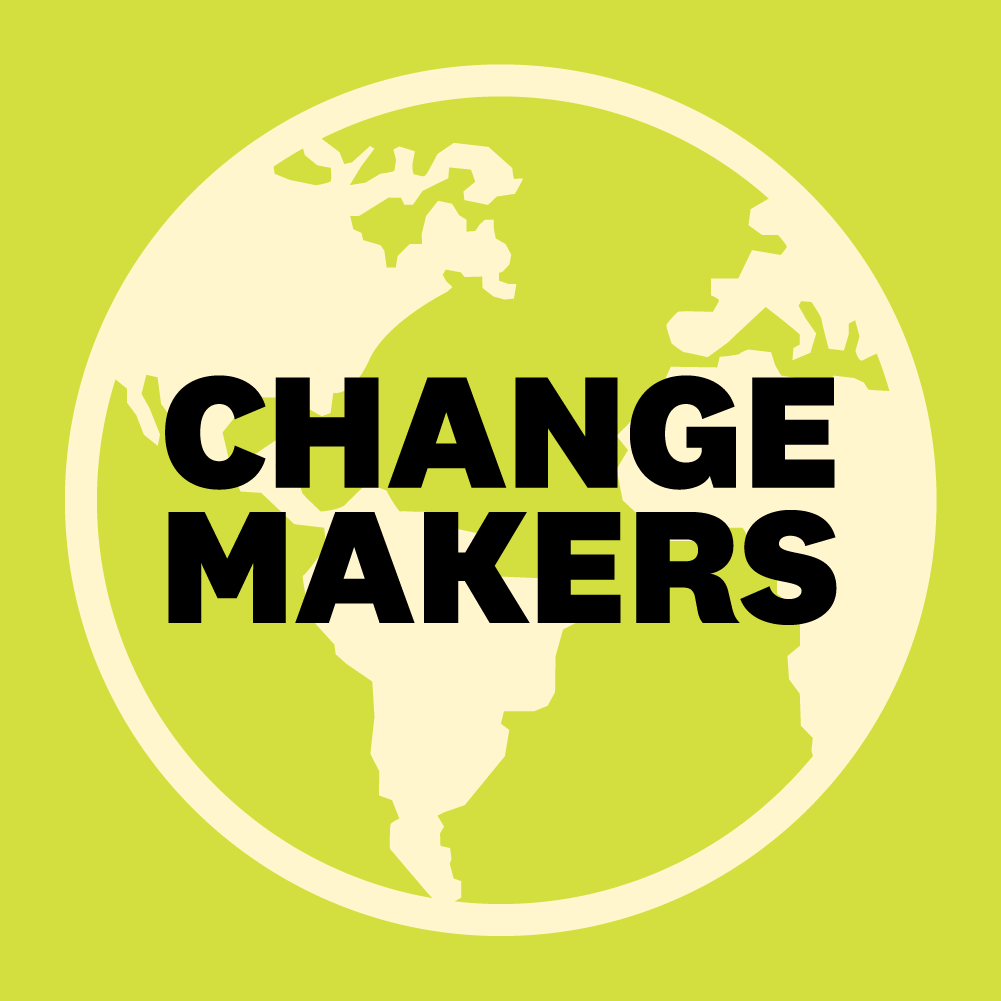 By day, Chris Boone leads the USC Price School of Public Policy as dean. By night, he captures the wonders of the cosmos through astrophotography. An expert in urban sustainability and environmental justice, Boone sees cities the way he sees those celestial bodies: vast, complex and interconnected systems shaped by invisible forces.
By day, Chris Boone leads the USC Price School of Public Policy as dean. By night, he captures the wonders of the cosmos through astrophotography. An expert in urban sustainability and environmental justice, Boone sees cities the way he sees those celestial bodies: vast, complex and interconnected systems shaped by invisible forces.
Boone has spent his career unraveling the forces that shape urban environments and their impact on both people and the planet. His lifelong passion for exploring patterns — whether in the night sky or the urban sprawl — has shaped his approach to sustainability.
This Earth Month, USC News spoke with Boone about how his approach to urban sustainability informs his work in addressing the complex challenges facing our cities and planet.
What sparked your early interest in urban sustainability?
I’ve always had a deep interest in cities, so I consider myself an urbanist. At the same time, I love rural areas and wilderness. Spending time under dark skies is very important to me — not just for stargazing and photography, but for experiencing different types of environments.
That said, I’m always excited by urban environments because of their dynamism. They’re noisy, complex and full of life. Maybe it’s the challenge of figuring out puzzles, though I’m not entirely sure what draws me to them.
For my entire career, I’ve been interested in the uneven consequences and drivers of urbanization in terms of environmental and social outcomes. This interest goes back to a paper I wrote as an undergraduate, looking at ethnic clustering in Kingston, Ontario, where I’m originally from. I realized that cities are complex systems made up of sub-elements, like neighborhoods, and wondered: Why do neighborhoods form? And what does that mean for urban life and urbanization?

How do you personally define sustainability?
I define sustainability as improving well-being for present and future generations while safeguarding ecosystems on which all life depends.
One common misconception about sustainability is that it’s only about the environment. Sustainability, as I define it, must also focus on human well-being. Throughout my career, I’ve come to find that environmental justice and sustainability are deeply complementary; both are driven by a shared commitment to fairness, justice and improving quality of life for everyone.
Your research addresses sustainability across cities, economies and social structures. What is one area in which you think sustainability is overlooked but deserves more attention?
One crucial yet often overlooked aspect of sustainability is that it’s not just about the outcomes — it’s also about the processes that achieve them. These processes must be fair and just. It’s not only about understanding interactions between people and planetary systems; it’s about actively intervening in those systems to create better, more equitable conditions for present and future generations.
When people leave out these normative elements — when they disregard the need for intervention — it’s no longer sustainability. It might be environmental studies, environmental science or something else, but it isn’t sustainability.
How does taking a broader, interconnected view of sustainability — looking at how society, the economy and the environment influence each other — help us find better solutions?
This approach, known as systems thinking, is fundamental. First, understanding the integrated nature of socio-ecological and technical systems is incredibly complex — no single discipline can do that alone. That’s why we need a diverse range of expertise.
This complexity presents challenges, but it also enriches our understanding in ways that a strictly disciplinary approach never could. When we move into the intervention or normative stage — working to build a better present and future — engaging ethics, collaboration science and stakeholder engagement becomes essential. Even the arts, such as dance and visual storytelling, play a crucial role in communicating complex ideas. If we ignore these elements, we risk falling short of our goals.
A systems approach isn’t just critical for understanding how humans interact with natural systems — it’s also key to designing, implementing and evaluating interventions in ways that genuinely help us achieve our sustainability objectives.
How do cultural values and historical context shape sustainable solutions, especially in urban areas?
In my approach, both in a university setting and beyond, I use a core competency framework with five key elements. The first is systems thinking, which we’ve already discussed. The second is futures thinking, or anticipatory thinking, which involves envisioning possible future scenarios and recognizing today’s decisions shape long-term outcomes.
The third is values thinking, or normative thinking, which emphasizes sustainability is not just about what could happen, but what should happen. It’s about considering the ethics of our decisions and engaging with the values that drive behavior. Sustainability requires us to negotiate across different value systems to find common ground, respecting local actions while acknowledging their global impact.
The fourth competency is strategic competence — developing effective strategies, whether economic, technological, behavioral or political, tailored to each context. There’s no one-size-fits-all solution.
The fifth is collaborative competence. No single individual can fully understand the complexities of sustainability, let alone solve its challenges alone. So how do we collaborate effectively? How do we negotiate, compromise and work across cultures, time and space?
Culture does matter — because it shapes how we see the world and influences how we respond to new ideas and approaches.
What gives you hope for the future? What developments or changes are you most optimistic about?
I’m an optimist by nature, but I’m also optimistic because history is filled with examples of large-scale change. Look at the Civil Rights Movement or women’s suffrage — these were transformative shifts that once seemed unthinkable but eventually came to pass.
We can achieve our sustainability objectives, and Los Angeles is a particularly exciting place to be. Here, people genuinely care and pay attention, and because what we do here has ripple effects around the world, our actions shape global discussions on cities and how they grow. Moreover, with major events like the upcoming Olympics and World Cup, the spotlight will be on Los Angeles, providing a unique opportunity to demonstrate how a major metropolitan region can drive global change.
